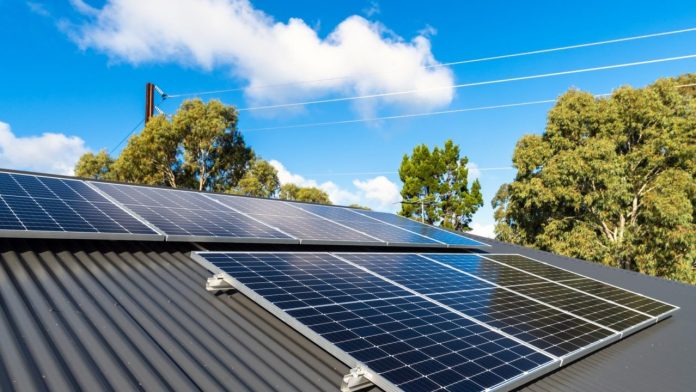Farmers are now eligible to apply for grant aid to install solar PV on their rooftops under the new Targeted Agricultural Modernisation Scheme (TAMS 3), which opened for applications at the end of February.
The addition of solar panels on farm-shed rooftops has been a major talking point amongst farmers in recent weeks and its eligibility for grant aid will likely see many farmers installing solar panels on their sheds over the coming years.
A Co. Cavan-based solar-panel installation company recently hosted an information event at Cavan Mart for farmers considering installing solar panels.
Speaking to Agriland at the event, Hybrid Energy Groups’ Daniel Connolly explained that the energy supply to the farm will determine the amount of solar energy the farm can generate.
“The energy supply to farms is either three-phase or single-phase. Single-phase is generally for domestic use but there are some farms with a single-phase energy supply,” he said.
“With single-phase, you’re limited to the amount of solar panels you can put up. Currently, a farm supplied by single-phase power can only install a 6kW inverter, but that is going to change down to a 5kW inverter.”
Connolly explained that an inverter is “basically the brains of the solar energy generation operation”。 The solar panels feed energy into the inverter and it changes the energy from direct current (DC) to alternating current (AC) which can be used as electricity.
“As a rule of thumb, a 5kW inverter will manage 7.5kW of panels, which is approximately 18-20 panels and with the single-phase connection, farmers are limited to that,” he said.
However, Connolly said that farmers with a three-phase connection can install more powerful inverters.
“With a three-phase connection, you can go up as far as 14kW which is approximately 25-30 panels. To go any further than that, you have to apply for permission,” he said.
“Larger-scale solar units may potentially have to install a piece of equipment known as a G-10 relay which will add further expense but if this is installed, up to a 62kW inverter can be installed.”
Connolly added that a G-10 relay is “a safety feature to regulate the power”。
Options for storing solar power
Connolly shared an example of a traditional dairy farm, milking cows twice a day, where “peak power usage is first thing in the morning and last thing in the evening when the milking is taking place”。
“The solar panels are working in daylight hours and the idea is with solar panels, you’re covering your full daytime usage. Between milkings, you’re covering your milk cooling and all that from the solar panels,” he said.
He said there are ways “to help widen the window of operation” and that this can be achieved by installing batteries to store energy.
“If the farm is on a day/night energy rate, the batteries can be charged during the nighttime rate, so in the morning when you’re up milking, instead of pulling from the grid, you can pull from your batteries,” he said.
“This might not cover the full milking process, depending on how many batteries you get, but it will cover enough that you will see a huge difference in electricity bills.
“By that stage, your milking is done and your solar panels are generating power. The panels are supplying your daytime electricity use and the excess power is going back into the batteries.
“When you come in to do your evening milking, you’re using up the free units and extending that free period into the evening.”
Connolly added that Hybrid Energy Group has had “a huge volume of interest” in solar panel installation from all farm systems that use large amounts of electricity, and that farms that have the same meter for both their dwelling house and farm buildings can also benefit greatly from the TAMS 3 solar funding.
Advice for farms considering installing rooftop solar panels
Source:Agriland






